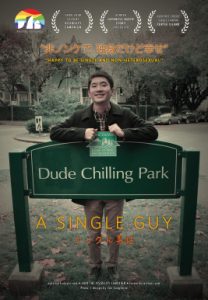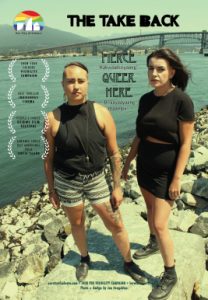In the case of homelessness, trans and queer youth compared to cisgender and straight youth disproportionately face homelessness because their identity has made living at home with their parents an unsafe or available option (Abramovich 2017, p.4). According to statistics drawn from the United States, LGBTQ2S identifying individuals make up 5-10% of the population, yet, make up 20-40% of homeless youth (Quintana 2010, p.6). Such statistics can be assumed as similar in the Canadian context. This website entry draws on the work of the recently published book of essays “Where am I going to go? Intersectional Approaches to Ending LGBTQ2S Youth Homelessness in Canada and the US” to articulate why shelter spaces developed solely for queer and trans youth are important. When I use the term queer and trans youth, I am referring to all queer and trans youth, with specific awareness of the two-fold marginalization of queer and trans of youth of colour. As articulated throughout “Where am I going to go?” and throughout the websites and newspaper articles dedicated to this topic, there is a recurring experience of youth homeless shelters and services being inaccessible and unsafe for queer and trans youth. Drawing on the work of Marlon Bailey, this entry argues that forging spaces of safety for queer and trans youth is necessary because these spaces are rarely available to them in existing cultural and social spaces (Bailey 2014, p.491).
As the publishers articulate, “the goal of this book is to take homelessness research and relevant policy findings to new audiences” (Abramovich 2017, p. III). While this book incorporates the research done across North America, due to the intention that dialogues introduced in this book will inform public and government funding and policy, it is relevant to future program development in Vancouver. This will in turn reflect the implementation of programs for queer and trans youth. With this understanding in mind, I provide an overview of the book’s strengths and limitations to illuminate how this research may influence and shape the government’s role in queer and trans homelessness services.
This book begins by arguing for the dismantling of the criminalization of homelessness (Abramovich 2017, p.X). In challenging discourses that frame homelessness as criminal behaviour, this book moves away from blaming individuals for their experience of homelessness, and fosters a critique of the structural factors that result in homelessness among queer and trans youth. To further destabilize power imbalances within mainstream discourses and program development around homelessness, the book works to center voices of homeless LGBTQ2S youth. For example, the scholars are informed by interviews and surveys with homeless LGBTQ2S youth.
Due to this website’s focus on queer and trans of colour events and services in Vancouver and the surrounding lower mainland, it is essential that this entry points to the lack of dialogue around the intersection of race. Within the books 22 essays, only 4 specifically focus on race; one on Indigenous youth in British Columbia and the other three on Black youth in the US.
This book was published in Toronto, but takes a translocal approach by presenting the role of scholars from across North America. Drawing on Bacchetta et al.’s work on the translocal (2015), this entry proposes that translocal networks between queer and trans youth dismantle normative frameworks for homelessness services. Furthermore, it is essential to acknowledge that homelessness is an experience of migration that occurs around the world. Many queer and trans youth that face homelessness have moved, be it from different countries or from a rural setting to the urban city of Vancouver. Therefore, while the homelessness situation in Vancouver is exacerbated by our current unaffordability, fentanyl crisis and socioeconomic inequalities, homelessness in Vancouver cannot be understood as simply a local issue. Ultimately, there are lessons to be learnt from the larger network of spaces researched in this book. As Bacchetta et al. (2015) argue, the interventions performed by queer and trans of colour foregrounds them as geographical subjects in local locations that are often open only to white cis/straight populations (p. 773). The work of providing shelter for queer and trans youth goes beyond providing physical safety. The act of giving youth permanent addresses opens the door for their ability to apply to jobs, school and social services. Further, these programs participate in “transformative placemaking” (Bacchetta et al. 2015, p. 773) whereby queer and trans youth of colour use their experience of “forced and voluntary (im)mobility, travels and translation” (p. 775) in their process of community (and) spaces making, and in doing so, ensure their presence in the city is not forgotten or pushed out by more privileged narratives or experiences.
Lastly, this entry acknowledges the complicated dynamic of homelessness services existing on unceded territory at the same time that the colonial project continues to dispossess Indigenous People’s from their land. Further, as the book states, Indigenous youth make up around 6% of Canada’s population, but statistics from surveys show they may be over half of all homeless youth (Saewyc 2017, p. 14). Contemporary homelessness and poverty amongst Indigenous bodies is a present day form of colonial dispossession and highlights that colonialism is an ongoing process.
References:
Abramovich, A., & Shelton, J. (2017). Letter to the reader. In. A. Abramovich & J. Shelton (Eds.), Where am I going to go? Intersectional Approaches to Ending LGBTQ2S Youth Homelessness in Canada & the U.S. (pp. 13-40). Toronto: Canadian Observatory on Homelessness. Retrieved 6 Nov. 2017.
Abramovich, A., & Shelton, J. (Eds.). (2017). Where Am I Going to Go? Intersectional Approaches to Ending LGBTQ2S Youth Homelessness in Canada & the U.S. Toronto: Canadian Observatory on Homelessness Press.
Bacchetta, P., El-Tayeb F., & Haritaworn, J. (2015). Queer of colour formations and translocal spaces in Europe. Environment and Planning D, 33(5): 769-778.
Bailey, Marlon. (2014). Engendering space: ballroom culture and the spatial practice of possibility in Detroit. Gender, Place and Culture, 21(4): 489-507.
Saewyc, E., Mounsey, B., Tourand, J., Brunanski, D., Kirk, D., McNeil-Seymour, J., Shaughnessy, K., Tsuruda, S., & Clark, N. (2017). Homeless & Street-Involved Indigenous LGBTQ2S Youth in British Columbia: Intersectionality, Challenges, Resilience & Cues for Action. In. A. Abramovich & J. Shelton (Eds.), Where am I going to go? Intersectional Approaches to Ending LGBTQ2S Youth Homelessness in Canada & the U.S. (pp. 13-40). Toronto: Canadian Observatory on Homelessness. Retrieved 6 Nov. 2017.
Quintana, N., Rosenthal, J, & Krehley, J. (2010). On the Streets The Federal Response to Gay and Transgender Homeless Youth. Retrieved from https://cdn.americanprogress.org/wp-content/uploads/issues/2010/06/pdf/lgbtyouthhomelessness.pdf
















